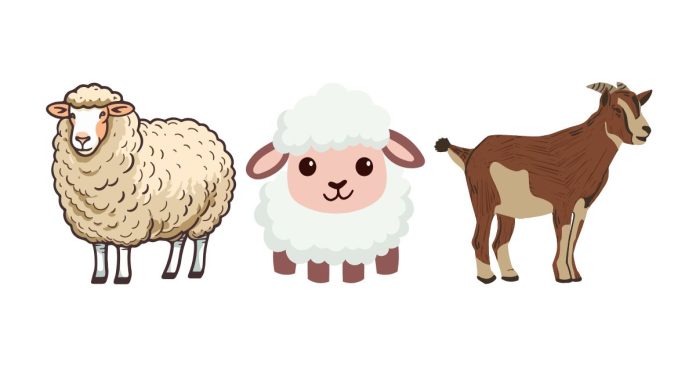Farm animals like sheep, lambs, goats, and rams are often mentioned together, but they have distinct differences that can confuse those unfamiliar with them. If you’ve ever wondered how to tell them apart or what makes each one unique, this blog post will break it down for you.
Sheep vs. Lambs vs. Goats vs. Rams: An Overview
To understand the differences, let’s look at each animal individually:
Sheep
Sheep are domesticated animals raised primarily for their wool, meat (mutton), and milk. They belong to the species Ovis aries and are known for their thick, fluffy wool coats. Sheep are grazing animals that prefer to eat grass and other low-lying vegetation.
- Key Features: Thick wool, docile temperament, and a strong flocking instinct.
- Common Use: Wool production, meat, and dairy.
Lamb
A lamb is simply a young sheep, typically less than a year old. The term “lamb” is often used when referring to the animal’s meat, which is more tender and has a milder flavor than mutton (meat from older sheep).
- Key Features: Smaller in size, softer wool, and playful behavior.
- Common Use: Lamb meat is a popular choice in many cuisines.
Goat
Goats are a different species (Capra aegagrus hircus) and are often mistaken for sheep due to their similar size. However, goats have distinct characteristics, including leaner bodies, straight or curved horns, and short coats. They’re highly curious and independent animals.
- Key Features: Slim build, shorter fur, and distinct beards on males.
- Common Use: Milk, meat (chevon), and fibers (like cashmere and mohair).
Ram
A ram is a male sheep, typically uncastrated, that is used for breeding purposes. Rams are easily identified by their large, curled horns and more muscular build compared to female sheep (ewes).
- Key Features: Large horns, muscular body, and territorial behavior.
- Common Use: Breeding and maintaining the flock.
Key Differences Between Them
Let’s break down the major distinctions:
| Feature | Sheep | Lamb | Goat | Ram |
|---|---|---|---|---|
| Species | Ovis aries | Young sheep | Capra aegagrus | Male sheep |
| Age | Adult | Under 1 year old | Any age | Adult male |
| Wool/Fur | Thick wool | Soft wool | Short coat | Thick wool |
| Behavior | Docile, social | Playful, curious | Independent, bold | Territorial |
| Horns | Varied (some hornless) | Varied | Straight or curved | Large, curled |
| Meat Term | Mutton | Lamb | Chevon | N/A |
Common Confusions
- Sheep vs. Goats: While both are hoofed animals, sheep have wool, and goats have short hair. Goats are more independent, while sheep prefer to stay in flocks.
- Lamb vs. Sheep: Lamb refers to a sheep that is less than a year old, whereas sheep is a general term for the animal at any age.
- Ram vs. Sheep: A ram is specifically a male sheep, usually used for breeding, while “sheep” is a general term.
Fun Facts
- Goats are natural climbers and can be found in mountainous regions, while sheep prefer open pastures.
- Rams can butt heads with significant force, often as a display of dominance.
- Lamb meat is popular for its tender and mild flavor, especially in dishes like roast lamb or lamb chops.
Although sheep, lambs, goats, and rams may share similarities, they each have unique traits and roles in agriculture and culture. By understanding these differences, you’ll be better equipped to identify them and appreciate their individual characteristics. So next time you encounter these animals, you’ll know exactly what sets them apart!


